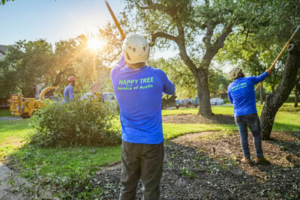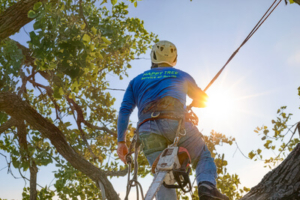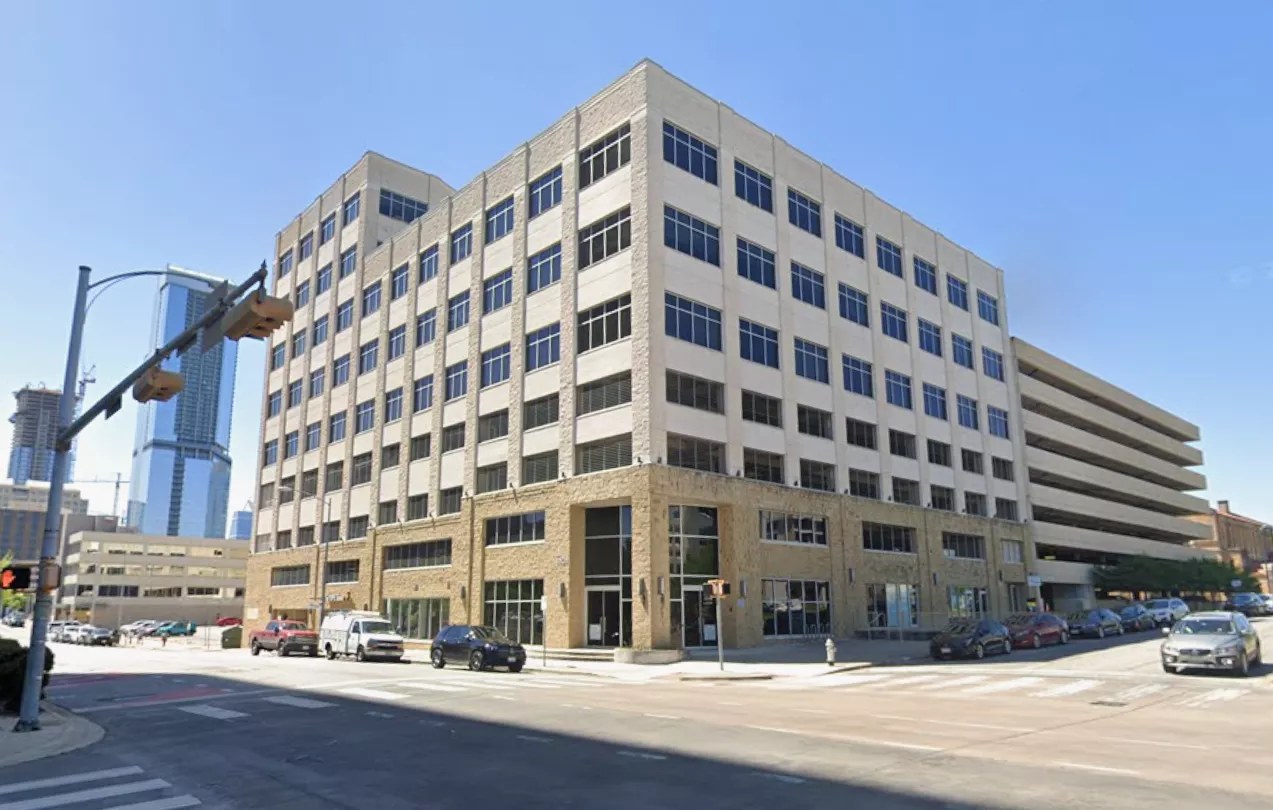Trees in Austin provide shade, beauty, and vital support for our neighborhoods, businesses, and communities. Unfortunately, common tree diseases continue to threaten their health and longevity each year. With proper knowledge and care, many of these issues can be prevented. When caught early, even serious problems can often be treated before they spread or cause lasting damage.
At Happy Tree Service of Austin, we specialize in diagnosing and treating tree diseases using science-backed methods and certified expertise. From oak wilt to fungal infections, our ISA Certified Arborists have the training to identify issues accurately and the tools to respond effectively. By partnering with the Texas A&M Plant Pathology Lab, we confirm our findings with lab analysis, ensuring that treatments are based on data rather than guesswork. When your trees show signs of stress, early action and professional care can make the difference between saving them and losing them.
What Makes Our Disease Management Approach Different
 Treating tree diseases is not as simple as spraying a chemical and hoping for results. Trees are complex living systems, and effective management requires precision. Our approach stands apart from companies that use one-size-fits-all solutions.
Treating tree diseases is not as simple as spraying a chemical and hoping for results. Trees are complex living systems, and effective management requires precision. Our approach stands apart from companies that use one-size-fits-all solutions.
ISA Certified Arborists Trained in Disease Identification
Every evaluation begins with an ISA Certified Arborist. This credential ensures that the person assessing your tree has advanced training in biology, pathology, and tree structure. Certified arborists understand how different diseases present, how to distinguish them from environmental stress, and how to interpret subtle symptoms. This expertise is critical in Central Texas, where drought, heat, pests, and disease often overlap.
Partnership With the Texas A&M Plant Pathology Lab
Visual inspections alone are not always enough. Many tree diseases mimic one another, and misdiagnosis can waste valuable time. That’s why we collect tissue, leaf, and soil samples when necessary and send them to the Texas A&M Plant Pathology Lab for testing. This partnership gives us access to scientific confirmation, allowing us to design precise treatment plans. By relying on lab analysis, we eliminate guesswork and give your trees the best chance for recovery.
Science-First Treatment Plans, Not Spraying Blindly
Instead of applying generic sprays, we create treatment plans tailored to the specific disease and the tree’s condition. Sometimes the solution involves fungicide injections, while other times it requires soil correction, aeration, or root collar excavation. By using science to guide every decision, we avoid unnecessary treatments, reduce chemical use, and deliver better outcomes for both your trees and your property.
Common Tree Diseases in Central Texas
Central Texas is home to a variety of tree species, but it also presents unique challenges. Hot summers, drought conditions, and clay-heavy soils create ideal conditions for several serious tree diseases.
Oak Wilt
Oak wilt is one of the most destructive tree diseases in Austin. It is caused by a fungus that spreads through root systems and insect activity, killing thousands of oaks across Texas every year. Early signs include veinal leaf browning, premature leaf drop, and rapid canopy loss. Once oak wilt advances, trees can die within months.
Because oak wilt spreads quickly to neighboring trees, early detection is critical. Our Texas Oak Wilt Qualified arborists are trained to diagnose the disease, recommend treatment, and apply fungicide injections during the safe seasonal window. Preventive care, including pruning only between July and January, is also essential to reducing risk.
Hypoxylon Canker
This fungal disease typically affects stressed trees, especially after drought. Hypoxylon canker appears as peeling bark, sunken lesions, or black fungal growth on trunks and branches. Unfortunately, once symptoms are advanced, infected trees often cannot be saved. The key to managing hypoxylon canker is prevention: reducing stress through proper watering, soil care, and monitoring. Our arborists can identify early signs and recommend supportive treatments to improve resistance.
Root Rot and Fungal Infections
Poor drainage, compacted soils, and buried root collars create ideal conditions for root rot and fungal infections. Symptoms may include thinning canopies, poor growth, and mushrooms or fungal conks near the base of the tree. These infections compromise structural stability and often require immediate attention. Root collar excavation and soil improvement are among the treatments we use to help trees recover and prevent future infections.
Anthracnose
This disease commonly affects sycamores, oaks, and other broadleaf trees. It causes irregular leaf spots, curling, and premature defoliation during wet springs. While rarely fatal, repeated infections weaken trees and make them vulnerable to other stresses. Proper pruning and sanitation are key to reducing anthracnose. Our arborists also recommend improving airflow through the canopy to limit fungal development.
Bacterial Leaf Scorch
Bacterial leaf scorch is another serious condition in Central Texas, particularly for oaks and elms. Symptoms appear as browning along the edges of leaves, often mistaken for drought stress. Over time, it leads to canopy thinning and branch dieback. Because this disease is spread by insects, management focuses on monitoring, supportive fertilization, and reducing stress so trees can resist decline for as long as possible.
Warning Signs Your Tree May Be Sick
Recognizing the early signs of disease can save valuable time and reduce the risk of losing your trees. If you notice any of the following symptoms, schedule an evaluation with a certified arborist.
Yellowing, Wilting, or Browning Leaves
Discolored leaves outside of normal seasonal changes often indicate stress. When yellowing or browning appears in specific sections of the canopy, it may point to nutrient deficiencies or vascular infections such as oak wilt.
Fungal Growth or Bark Discoloration
The presence of mushrooms, fungal conks, oozing bark, or discolored patches often signals decay or infection. These signs should never be ignored, as they usually point to internal issues that compromise stability.
Canopy Dieback or Sudden Leaf Drop
If large portions of your tree lose leaves suddenly or show progressive dieback, it may indicate disease spreading through the vascular system. Quick intervention can sometimes halt or slow decline, but delay often leads to loss.
![]() 230+ Google Reviews
230+ Google Reviews
 Treating tree diseases is not as simple as spraying a chemical and hoping for results. Trees are complex living systems, and effective management requires precision. Our approach stands apart from companies that use one-size-fits-all solutions.
Treating tree diseases is not as simple as spraying a chemical and hoping for results. Trees are complex living systems, and effective management requires precision. Our approach stands apart from companies that use one-size-fits-all solutions. Accurate diagnosis is the foundation of effective treatment. At Happy Tree, we combine field expertise with laboratory resources to identify issues with precision.
Accurate diagnosis is the foundation of effective treatment. At Happy Tree, we combine field expertise with laboratory resources to identify issues with precision.



